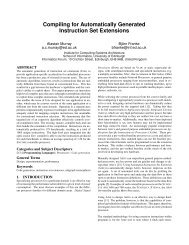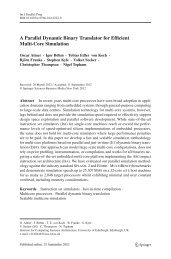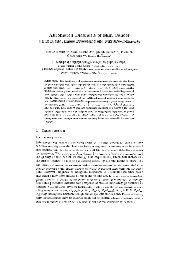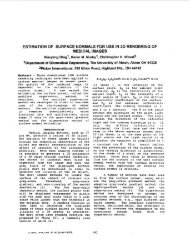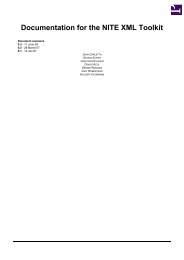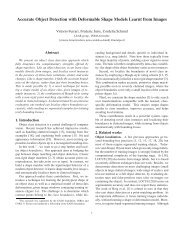WebExp2 Experimenter's Manual - School of Informatics - University ...
WebExp2 Experimenter's Manual - School of Informatics - University ...
WebExp2 Experimenter's Manual - School of Informatics - University ...
You also want an ePaper? Increase the reach of your titles
YUMPU automatically turns print PDFs into web optimized ePapers that Google loves.
Tag name<br />
Content<br />
Figure 11: Slide property elements/tags.<br />
infotag a piece <strong>of</strong> information to be associated with the slide; this is ignored during the experiment<br />
and is merely output with the results<br />
name a descriptive name for the slide; used in results output<br />
seqno the sequence number <strong>of</strong> the slide<br />
focus name <strong>of</strong> the component to focus<br />
mouse advance an empty tag indicating that the mouse is to be monitored<br />
advancekeys characters that can be used to advance the slide<br />
rows a comma-separated list <strong>of</strong> proportional row heights in decimal format, summing to 1.0<br />
cols a comma-separated list <strong>of</strong> proportional column widths in decimal format, summing to<br />
1.0<br />
font tags face, size, style defining the properties <strong>of</strong> the font<br />
fgcolor tags r, g, b defining red, green and blue components <strong>of</strong> the foreground colour; or a name<br />
defined in java.awt.Color<br />
bgcolor as above, defining the background colour<br />
Sub-element tags for complex properties like font and colour<br />
r red component <strong>of</strong> a colour (0-255)<br />
g green component <strong>of</strong> a colour (0-255)<br />
b blue component <strong>of</strong> a colour (0-255)<br />
face name <strong>of</strong> the font<br />
size integer point size for the font<br />
style a number representing the font style (0=normal, 1=bold, 2=italic, 3=both)<br />
The logical font names are mapped to local system fonts on the computer running the applet and thus may<br />
still give a varying visual appearance. Despite this, the variation should be minimal if you are working within<br />
a particular social group — for example if you are running an experiment in Japanese, your subjects may be<br />
expected to have the necessary underlying fonts.<br />
You should be aware <strong>of</strong> these potential variations, particularly if your experiment is potentially sensitive to<br />
variations in the visual environment. The only way to be sure <strong>of</strong> what your subject sees is to use an image.<br />
Colours Precise colours can be specified by defining values between 0-255 for the sub-properties r, g, b <strong>of</strong> the<br />
(background colour) and (foreground colour) tags. Alternatively, some simple colours<br />
can be specified by name instead <strong>of</strong> rgb tags (see figure 12).<br />
Figure 12: The currently available colour names.<br />
black white cyan magenta yellow<br />
dark gray gray light gray pink orange<br />
blue red green maroon navy<br />
teal olive purple dark red<br />
33



